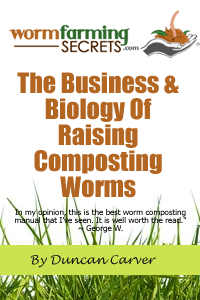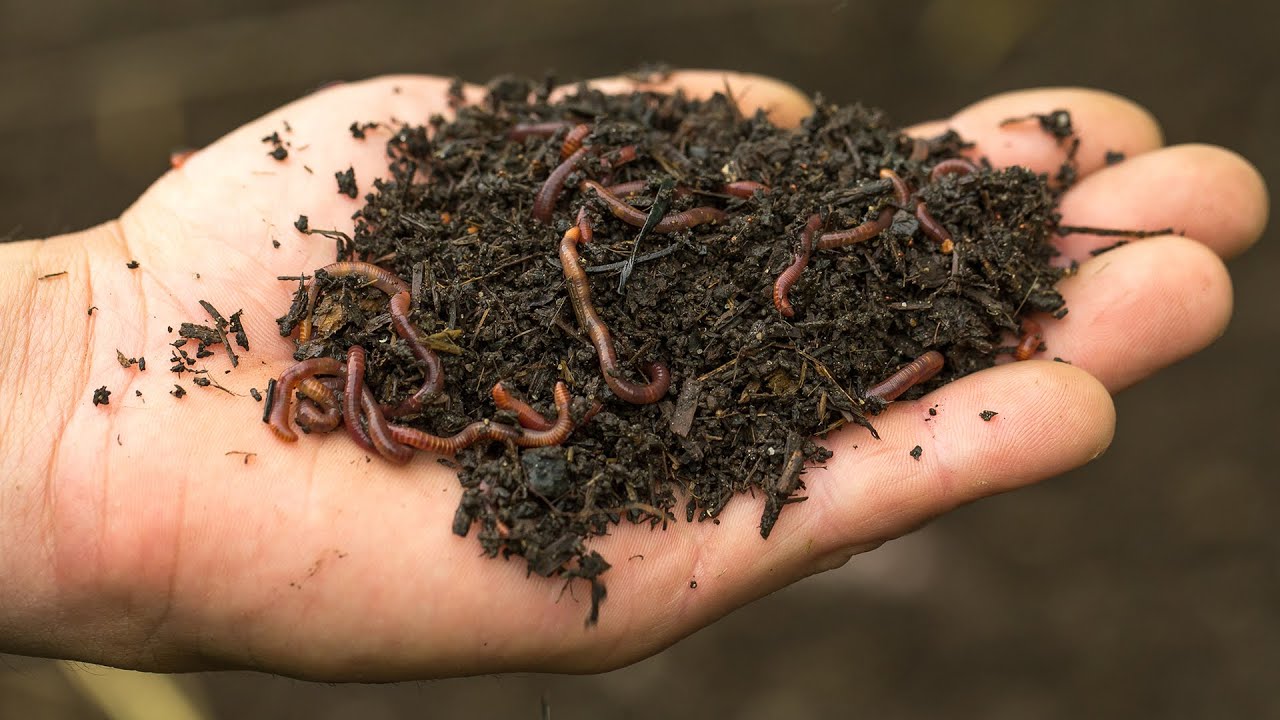“What is vermicomposting? What are the process of vermicomposting? How it can be controlled? Any other type of vermicomposting? Any other option to vermicomposting?” ~ Indrajit Yewale
Hi Indrajit,
Let’s approach this by comparing traditional “composting” with “vermicomposting”.
“Composting” in general is a ‘catch-all’ term referring to the aerobic (with oxygen), biological decomposition of organic wastes, under controlled conditions (or at least semi-controlled conditions). Unlike the leaves that rot in a forest for example, there is an important human element here.
What is an ‘organic waste’? It is any carbon-containing material that was once part of, or was at least produced by a living organism.
On a large-scale, composting is always a ‘thermophilic’ process, whereby considerable amounts of heat are produced as a result of the intense microbial activity within the composting mass. This heat can be important for killing pathogens and weed seeds, as well as speeding up the decomposition process.
“Vermicomposting” can be defined specifically as the biological breakdown (decomposition) of organic wastes, via the joint action of (specialized) earthworms and microorganisms. It is a term that can be used interchangeably with “worm composting”.
By the way – ‘vermiculture’ (literally ‘worm culture’) and ‘worm farming’ are somewhat different in that the focus tends to be on the production of worms (for sale), rather than the compost that is produced. (Of course, many people focus on both).
Vermicomposting is a “mesophilic” process – that is to say it occurs at moderate temperatures (ambient or somewhat warmer).
That being said, it’s important to mention that any microbial decomposition in the presence of oxygen produces heat, so you can certainly run into overheating issues with worm composting – especially when conducted on a large scale. This is something you really want to avoid however, since most composting worms won’t survive for long once the temperature (in worm bed) passes 35 C (95 F) or so.
Maintaining a relatively high carbon/nitrogen ratio (> 30:1), limiting the amount of waste you add at any one time, and keeping your worm bed in a sheltered location can all help to reduce the chances of this happening.
Both ‘regular’ composting and vermicomposting can lead to the production of a humus-rich, highly valuable soil amendment, but there are definitely some differences between materials (will save that for another newsletter).
Here now are some advantages/disadvantages for the two processes (for the sake of this comparison, ‘composting’ refers specifically to ‘thermophilic composting’)
Advantages of Composting
Composting can be a great way to process large quantities of organic waste in a relatively short period of time (under optimal conditions and with the right equipment). It also has a the huge advantage of high temperatures, which can be very important for eliminating pathogens and weed seeds.
Disadvantages of Composting
Not as effective on a smaller-scale. In order for thermophilic temperatures to be reached and sustained, a ‘critical mass’ of material is needed (1 m3 or more). High temperatures can result in more nitrogen (and water) loss. Also, because large quantities of waste are generally required, it can be more labor-intensive.
Advantages of Vermicomposting
Worm composting can be conducted on a much smaller scale, and in general the addition of composting worms can greatly accelerate the breakdown of wastes in the mesophilic temperature range. It also has the advantage of producing worm biomass, which you can sell, feed to other animals or use to start up more worm composting systems. It can be relatively hands-free in comparison to large-scale composting – turning of composting mass is not required (since worms naturally aerate composting mass). It can also be done indoors – excellent solutions for apartment dwellers.
Disadvantages of Vermicomposting
One of the major downfalls of vermicomposting is the fact that it won’t eliminate weed seeds and there is not yet enough evidence to indicate that pathogens will be destroyed (only really a concern when original waste materials contain large quantities of pathogens). Worm composting can also be challenging when it comes to dealing with large quantities of waste accumulated in a short period of time. Unlike regular composting, worm composting needs to stay at relatively low temperatures so waste materials need to be applied in thin layers. In other words, unless you have many square feet of worm beds, it can be quite difficult to handle large quantities of waste at any given time.
In my opinion, the best way to process wastes on a large-scale is to combine normal composting with worm composting. Start by ‘pre-composting’ (composting for a short period of time) your waste, thereby killing most weed seeds and pathogens, then finish it off via vermicomposting. This way you can take advantage of the strengths and eliminate the weaknesses of each approach.



